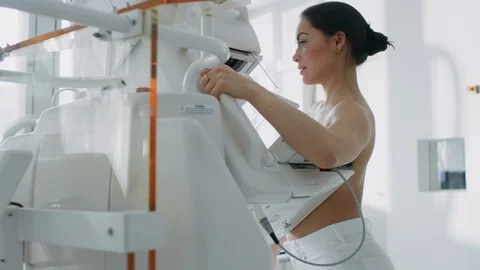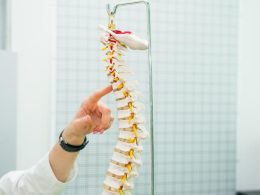Mammography is the diagnostic study that is performed on the breasts, using X-rays.
It comprises three primary projections: oblique, lateral, and craniocaudal. This equipment can detect cancer in the pre-clinical stage, one or two years before the tumor reaches palpable size (greater than 1 cm.).
Mammography features:
Radiation exposure from modern mammography is extremely low, so the risk of radiation-induced cancer is equally low.
Modern technology provides a favorable risk-benefit ratio in women 40 years of age or older. However, it should not be used in women under 25 years of age; From this age and up to 39 years, it is recommended only in cases of diagnostic problem.
Indications:
1. High-risk patients:
a. Previous breast cancer
b. History of breast cancer (maternal grandmother, mother, sister)
c. Woman who has not had children: few children or first child, after 35 years of age
d. First period at an early age, late menopause.
and. History of some previous breast diseases, according to medical criteria; between them:
- ductal papillomatosis
- ductal hyperplasia
- fibrocystic disease
2. Signs and symptoms of doubtful cancer
3. Changes in the breast, which have justified previous biopsies
4. Cancer of unknown origin (for example: adenocarcinoma)
5. Breasts difficult to examine (irregular, large, pendular)
6. Patients older than 40 years, with lesions requiring breast surgery
7. Preoperatively, in all patients with breast cancer
8. Discharge from the nipple, with or without a palpable mass.
9. Cancerophobia (excessive fear of cancer)
Recommendations for early detection of breast cancer from the American Cancer Society:
- Women ages 20-39: monthly breast self-exam and clinical exam every 3 years
- Women ages 40-49: Must have monthly self-exam, annual clinical exam, and mammogram 1-2 years
- Over 50 years: monthly self-exam, annual clinical exam and annual mammogram.
Risk factors for developing breast cancer:
Age (over 50 years)
Hereditary factors: familial, genetic
Previous history of breast cancer: In situ, Invasive
Benign breast disease: Atypical hyperplasia
Endogenous endocrine (hormonal) factors:
First menstruation: under 12 years
Menopause: over 50 years
No children or late first child: over 35 years
Exogenous endocrine factors:
Estrogen replacement after menopause
Oral contraceptives
Environmental factors:
Region of birth (where?)
Diet (what type?)
Alcohol (abuse)









